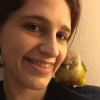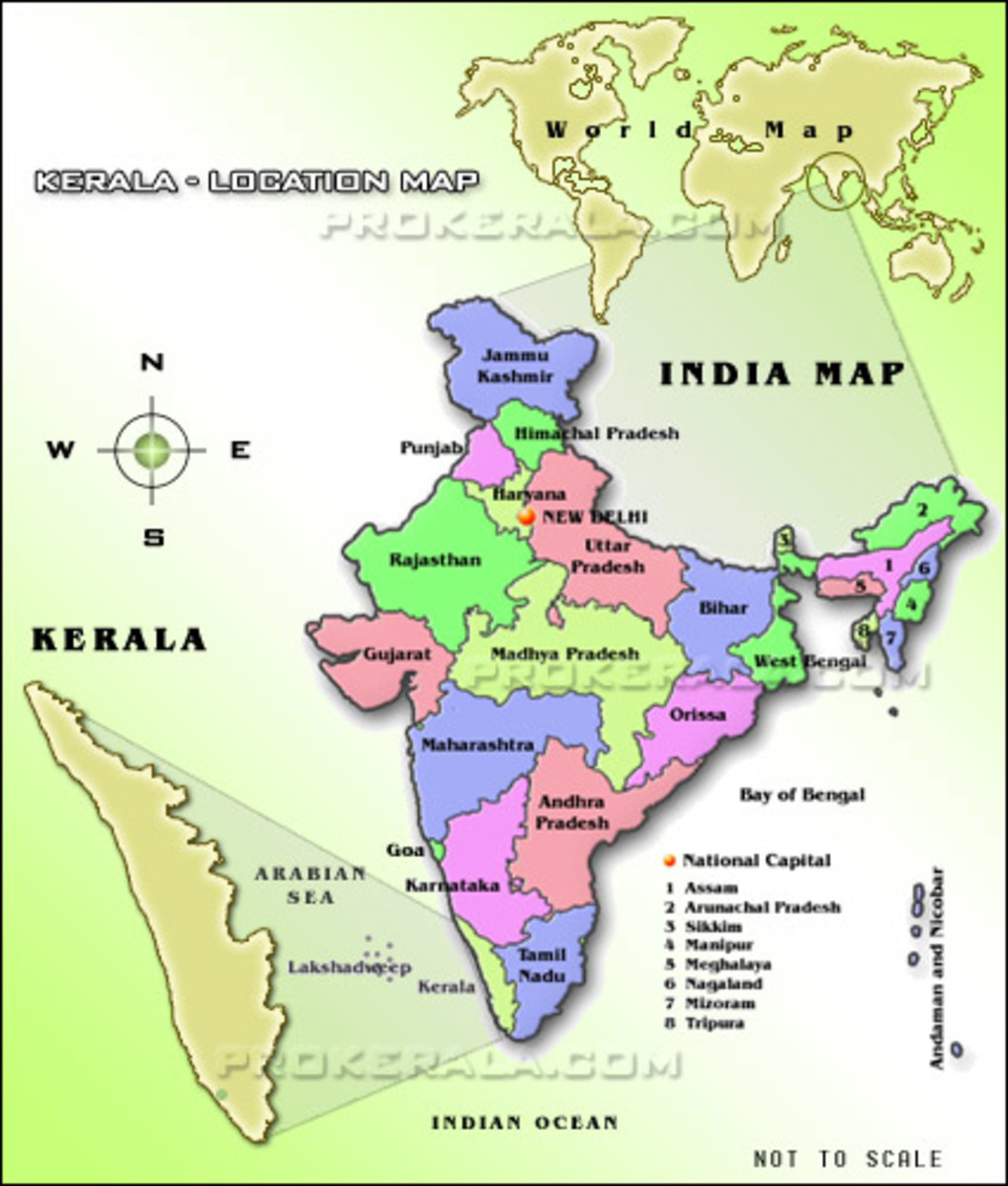Birds in the City: How Urban Environments are Altering Wild Bird Behaviors
What is Urbanization?
The word urbanization is starting to get used a lot more frequently in daily conversations, but what exactly does it mean? In it's simplest terms, urbanization is the process by which rural areas become more densely populated with humans, which results in them being converted into urban areas, also known as cities (2). It seems like a no-brainer that cities are drastically different than their rural counterparts, but researchers have only begun to really delve into what makes a city such a unique type of ecosystem.
Urbanization brings about many changes, some of which are great, like longer growing seasons and higher food abundance (5). However, cities may also bring about other effects, many of which are detrimental not just to humans but also to the great diversity of wildlife that lives among us. Understanding what urbanization means, how it can affect wildlife, and what we can do to lessen some of the negative effects is a crucial step in helping to protect the fascinating and fantastic animals that live alongside us in what is quickly becoming the most common and human-dominated ecosystem: the city.
In order to best understand the topics within this article, the following is a list of common ecological terms that may be useful to know.
- Anthropogenic- caused by humans, man-made
- Biological Control- The use of natural enemies, such as parasites, diseases, and parasitoids, to control pest populations. Allows us to control invasive insect populations without using harsh chemicals. (Also known as biocontrol.)
- Biodiversity- The number of different types of species within a given area. In general, a higher biodiversity means a healthier ecosystem.
- Community- Many different populations within a given area
- Ecosystem- All of the biotic, or living aspects, and the abiotic, or non-living aspects, features within a given area and their interactions with each other.
- Generalist- Animals that can live by consuming a wide variety of foods, such as rats, cockroaches, crows, and raccoons. These animals tend to do extremely well in cities.
- Migration- The seasonal move of an animal from one area to another, often to find more abundant food or preferable sites for nesting
- Population- All of the individuals of a certain species within a given area
- Specialist- Animals with very particular dietary or habitat needs, such as butterflies and hummingbirds. These animals tend to do relatively poorly in cities and many have seen sharp declines in their populations over the last few decades.
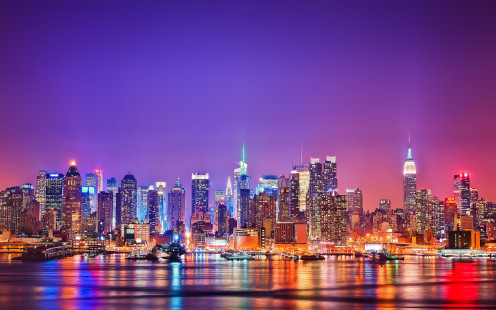
Ecological Effects of Urbanization
Urban Heat Island Effect
While urbanization may seem simple enough, there are many little details that make understanding the full implications of an urbanized world far more difficult to comprehend. One such effect is known as the "urban heat island effect." The urban heat island effect, or UHI, is a phenomenon that occurs in many cities all around the world. Due to the overwhelming amount of concrete, bricks, and other building materials that trap heat, as well as tall buildings that block natural airflow, cities tend to be, on average, 3 to 5 degrees hotter than surrounding rural areas (4). Because of this, there is a major effect on the wildlife that live within cities. Warmer temperatures change the community composition and alter the kinds of animals that can handle the demands of living within cites. Some animals do very well in warmer areas, but some animals are forced to move from their natural habitats because they are not able to adapt to the changes. Even worse, some animals may go extinct due the the very rapid changes urbanization is bringing about.
Habitat Fragmentation
Another major problem with urbanization is habitat fragmentation. Habitat fragmentation is caused by the construction of roads and housing developments as well as the increase of industrial, agricultural, and commercial areas that divide the natural landscape into many little pieces. For the animals that make their homes in the natural environments, smaller fragments mean less places to hide, find food, and raise their offspring safely. Habitat fragmentation has been shown to decrease reproductive success and well as decrease biodiversity severely (1). One relatively simple idea to increase the health and success of animals within urbanized areas is to connect many smaller fragments with corridors. Corridors are small stretches of relatively human-free land that allow animals to travel between forested areas safely. By giving the animals a way to easily travel to a wider range of natural areas, we can increase biodiversity and help promote healthy populations.
Anthropogenic Factors
Other anthropogenic factors such as increases in unnatural sound, light, and human traffic, either with motor vehicles or just by humans themselves, can cause a great deal of stress to wild animals (7). While some might struggle to see why this matters or why the animals couldn’t just move away and raise their families somewhere else, it may help to put it into prospective. For humans, moving is considered one of the most stressful events one can encounter, topped only by starting a new job or experiencing a death in the family. For animals who have spent generations adapting to one particular environment, coming back to a familiar mating spot after migrating for hundreds of miles only to find it replaced by a large brick building and open parking lot may just be too much to handle. It certainly puts the animals that migrate at a significant disadvantage, as those animals that have stayed throughout the winter would have already claimed the best territories and foraging spots (1).
Imagine a world with no wild animals; no birds singing in the trees, no insects pollinating the flowers, no squirrels to spread the seeds and nuts of trees. Not only would the world be a lot more boring, the ecological effects of massive animal loss would be detrimental to all of life on earth.
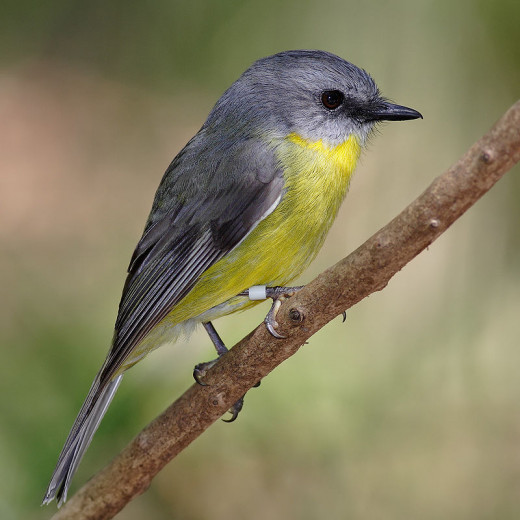
But What About the Birds?
Urbanization has a multitude of effects on every aspect of a given area. Many elements seem so minor to us that many people never even consider them to be a problem, like lights for example. Cities tend to be significantly brighter that the surrounding rural areas, due to the massive amount of lights needed to keep a city functioning properly. While night-lights may be beneficial to humans, they have the exact opposite effect on wild bird populations. City lights interfere with migrating birds’ ability to detect and follow the stars, one of the ways they correctly navigate their way during their migration. In addition, lights at night have been known to trigger and alter some songbirds natural circadian rhythms, which is how all vertebrate animals, including humans, know when it's time to sleep and when it's time to wake up. Because of this, there have been several reported occasions when birds begin to sing at night instead of during the day! You may have recently begun noticing this in your own area, perhaps coming out of a late night movie only to hear a few birds singing loudly . Not only is this annoying for the people who live near these confused birds, it's detrimental to the birds. If a male is spending time and energy singing, dancing, and displaying when no females are around to hear him, he is wasting crucial effort that could be used to secure a mate, reproduce, and keep his genes alive in the population.
Another common effect being seen in cities is lazier birds. Many people enjoy birdwatching and think providing bird seed to the wild birds is a good way to interact with wildlife and attract different species of birds to their yard. However, it has been shown that if humans provide food for wild birds, they will often become less likely to hunt for food on their own, which ultimately results in lazier birds. Some populations of once migratory birds, like the European Blackbird, have begun to stay in the city year round, eventually becoming residents (6). These birds use anthropogenic feeding to establish healthy winter populations, which then stay in the same place the rest of the year. In addition to the more moderate-microclimate, cities may actually have some benefits to certain populations of certain species, like year round food availability and slightly warmer temperatures (5). This also allows the new resident birds to claim all the best territories and defend the best resources (1). Nevertheless, the possible positive effects anthropogenic feeding has on some species of birds may not carry over to other species, especially less aggressive birds or those that are specialists. It is also a major change in a natural behavior, which is going to have an overall effect on the species as a whole. A decrease in specialist species will eventually lead to an overall decrease in biodiversity which can have a multitude of repercussions, especially in the long term.
Wild Bird Poll
How do you help support natural bird behaviors in your community?
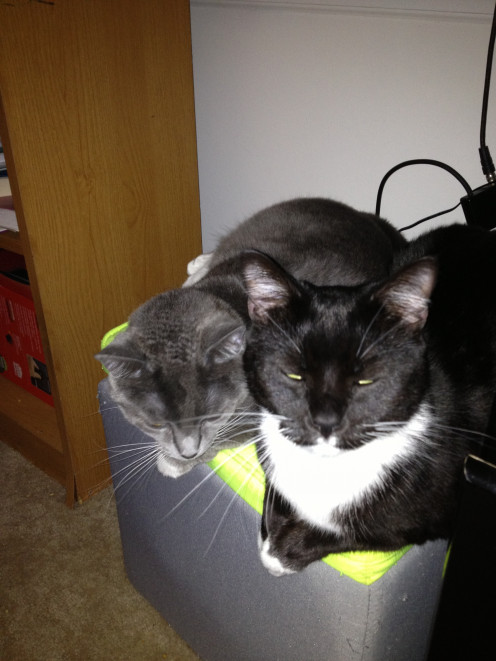
Here, Kitty Kitty!
One of the biggest problems with humans in the city is the animals they bring with them. Pet cats are domesticated animals that do not belong in a natural environment. The wild animals that live in cities have not had ample time to adjust or adapt to living with such a vicious and cunning predator, which makes them extremely deadly. Outdoor cats can devastate not only entire populations but also whole communities. Outdoor cats kill billions of wild birds and small animals a year (3). Not only does this cause an overall lack of diversity within these populations, this can lead to anxious, frustrated, and aggressive wild animals that become extremely stressed due to this unnatural predator (1).
It has been shown that the threat of predation on wild bird populations is leading to changes in their escape behavior. Escape behavior is what happens after an animal has been captured by a predator (5). In the wild, birds of prey, such as raptors, are the main predators of songbirds. In cities, birds are most often preyed upon by cats. Because of this, urban birds have been observed demonstrating very different escape behavior than their rural counterparts. Urban birds are less likely to wiggle, lose more feathers, and produce more fear screams and alarm calls than rural birds, all of which are related to behaviors that increase the chance of surviving a cat attack (5). Although it may not seem like a huge change, it is highly important for becoming better adapted to the city. It is also a change that is happening very rapidly.
Cats make great pets and should not be demonized for acting on their natural behaviors. However, it is up to the owners to be responsible and keep their pets inside their home. It's highly suggested that all cat owners keep their cats as indoor only animals. Not only will the wild animal populations benefit, indoor cats tend to be healthier, be infected with less parasites, and have an overall longer lifespan than cats who spent most or all of their lives outdoors.
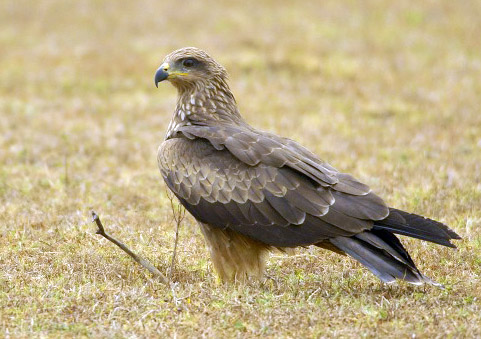
Avian Adaptations to Urban Environments
A significant by-product of urbanization is a huge increase in the number of human-wild animal interactions. Because of this, many natural bird behaviors are rapidly changing in order to better fit the demands of city life. Recently, scientists have been conducting lots of research to record, analyze, and understand how interacting with humans changes wild animal behaviors and what this means not only for the future of the animals, but also for the future of our cities.
One concerning aspect of greater human-animal interaction is the increase in aggression seen in some species of birds, especially during breeding season or around sources of food. Black kites, a type of bird of prey native to Eurasia, are becoming known for their tendency to viciously attack humans for their food (2). In several areas of Japan, urbanization has severely increased this behavior due to the sharp decrease in forested areas that black kites use as nesting sites. Birds that have no choice but to nest close to humans are likely going to be more bold and aggressive. Scientists have shown that both boldness and aggression are heritable traits and thus are passed from parent to offspring, making aggressive black kites significantly more common in urban areas (2). Scientists are only now realizing how important it is to include safe nesting areas that are farther away from humans into city planning. Considering wildlife when developing cities can help alleviate some of these growing pains as humans and wild animals learn to live together.
Another adaptation to city life is an overall increase in intelligence, or at least in the number of intelligent birds. Due to the greater likelihood that an urban bird will come into contact with an unnatural enemy than a rural bird, the fear behavior of birds in cities is becoming drastically different than those in rural areas. Urban birds may see humans as less than a threat and will often tolerate humans approaching them, flying away only at the very last minute (5). It has been suggested that city living attracts larger brained birds that are more intelligent and display more flexible behaviors (7). By living in such proximity to humans, birds need to learn how to judge who is friend and who is foe in order to optimize foraging behaviors and conserve energy. There's no reason to fly away if a human is leaving you a pile of seeds instead of trying to catch you! Some more intelligent species of birds are able to recognize individual human faces, such as corvids and mocking jays (7). It is hypothesized that urban landscapes are responsible for driving novel behaviors in many species of birds. It is debated whether big brained birds prefer the city or if city life is driving birds to become more intelligent. Regardless, smarter birds may be a more positive aspect of urbanization, but only if humans can learn to accept that we are not the only intelligent animals.
Crow Vending Machine
What You Can Do
Although it may seem like there is not much one person can do to help decrease the effects of urbanization, taking a few steps to ensure your yard or community is safe for birds, as well as other animals, can help increase biodiversity in your area. Here are some simple changes that can have a huge impact!
- Keep cats indoors
- Put bird nesting boxes away from areas frequented by humans
- Plant native species of trees and flowers
- Turn all lights off at night and try limit excessively loud noises if possible, especially from 9 at night to 9 in the morning.
- Cut back on providing wild birds with seeds. If you do feed the birds, consider many smaller feeders all over the yard to simulate natural foraging behaviors instead of one large one.
- If you provide food for wildlife during the spring and summer, continue feeding throughout the rest of the year, especially during the coldest months and the harshest weather.
- Reduce/ eliminate the use of pesticide and herbicides. Although it may seem like you are just killing the insects, the larger animals that rely on the insects for sustenance will also consume any chemicals used. Everything within an ecosystem has some relationship with and effect on everything else! Consider trying methods of biological control.
- If you find a baby wild animal, leave it alone! If it must be moved, try to look for the nest from which it fell or an worried parent up in the trees. Wild animals don't care if you've touched it and the rumor about birds and bunnies not caring for their offspring if it smells like human is just an old wives tail! Animals will take care of their babies no matter what, just let mother nature work!
- Consider researching citizen science projects you can help with. By getting involved and staying educated, you can turn a hobby into a passion as well as make a positive impact not just on your community, but on the whole world!
Bottom Line
While not all elements of urbanization can be completely avoided, many aspects can be reduced simply by more people being aware that the problem exists. If we all took just a few minutes each day to try to help increase biodiversity and promote natural areas free of human influence, perhaps we could help save some of the most endangered species and prevent the loss of other populations. Becoming actively involved in your community and speaking up when you see something negative happening can make all the difference. It may not seem like much, but one voice can bring about great change.
Appreciate nature, respect the environment, and support wildlife. Without these things, the world would not be nearly as beautiful, diverse, or amazing as it truly is.
Urbanization Quiz
view quiz statisticsWorks Cited
1. Evans K. 2011. What makes an urban bird?. Global Change Biology 17(1):32-44.
2. Galbreath D, Ichinose T, Furutani T, Yan W. 2014. Urbanization and its implications for avian aggression: A case study of urban black kites ( milvus migrans) along sagami bay in japan. Landscape Ecology 29(1):169-79.
3. Ghose T. 2013. Cats Kill Billions of Animals a Year. Livescience.
4. Menke S., Guenard B., Sexton J., et al. 2011. Urban areas may serve as habitat and corridors for dry-adapted, heat tolerant species; an example from ants. Urban Ecosystems 14:135-163.
5. Møller A and Ibáñez-Álamo J. 2012. Escape behaviour of birds provides evidence of predation being involved in urbanization. Animal Behaviour 84(2):341-9.
6. Moller A and Jokimäki J. 2014. Loss of migration and urbanization in birds: A case study of the blackbird (turdus merula). Oecologia 175(3):1019-27.
7. Vincze E, Papp S, Preiszner B, Seress G. 2015. Does urbanization facilitate individual recognition of humans by house sparrows? Animal Cognition 18(1):291-8.
